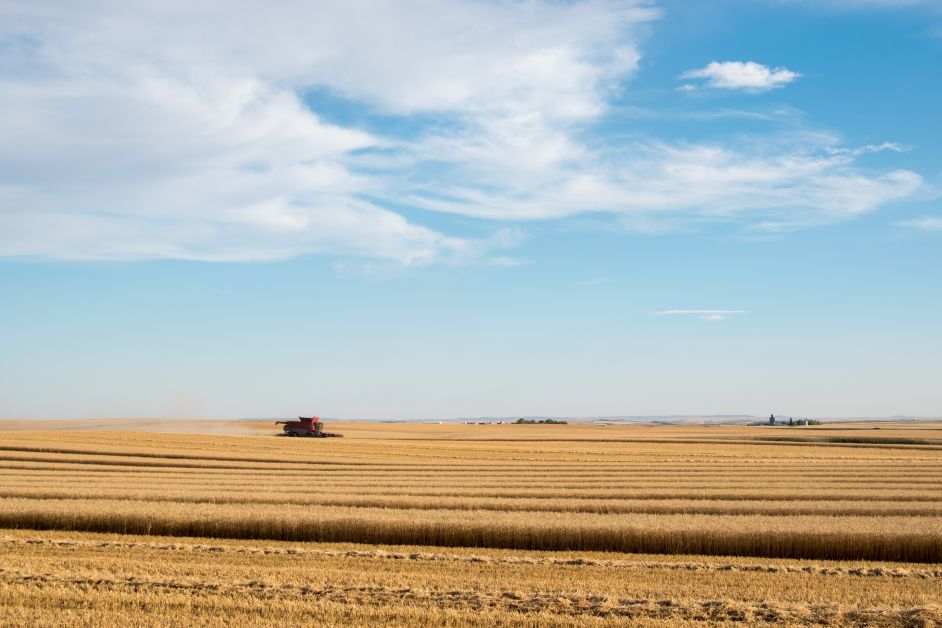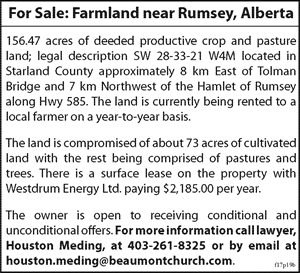
Dust, dirt, and hard work account for the most significant season in a farmer’s life; harvest. This year the Drumheller area has hit the ground running weeks ahead of schedule, surprising many in a good way.
“In general terms, I think everybody will be fairly pleased with the harvest this year,” said Starland Agriculture fieldman Al Hampton. “As long as their equipment works, and as long as they don’t have any fires and as long as they take their time, it should all go well.”
Many farmers raised concern over the extreme heat. The longest lasting period with no rain for this area was five weeks.
Because of this dry year, crops have been turning early.
According to the Alberta Crop Report, the central region has had very low moisture content ratings for both surface and subsoil moisture levels. Canola can be directly affected by this as the plant prefers wetter weather conditions to create healthy growth.
Wheatland County was no different when it came to this minimal moisture.
“It’s definitely ahead of normal,” said Albert Jensen, a local farmer based out of Dalum. “We haven’t been into any of the Canola but I’m thinking the Canola is probably going to be the one that suffers the most from this heat. I’m expecting Canola yields to be like a third less.”
Starland County has seen decent yields and good quality grain. Wheat and barley survived the best with great quality while Canola suffered the most which can be seen through smaller yields.
“Depending on where you are at in the county, it’s either in full swing or just kind of getting started. It’s on different levels – the northwest corner would be the furthest behind and likely the eastern third of the county would be the farthest ahead,” said Hampton. “Generally the quality is good and the yields are definitely falling within good averages.”
The central region’s harvest progress has improved 14 per cent complete compared to the five year average of a mere five per cent finished. 16 per cent is now in the swath stage.
Dry peas take first place with 61.9 per cent completed in the central area with Barley in second with 14 per cent finished. Spring wheat trails behind at 12 per cent complete and canola takes last at eight per cent.
Despite the numbers, Alberta’s south region has everyone beat with 52.4 per cent completely finished for the year.
Kneehill County has reached and witnessed similar findings to both Starland and Wheatland in regards to extremely dry and hot weather.
The Mail spoke with Orkney local Crystal Ferguson about the harvest situation in that area.
“We were all thinking it’s going to be a crappy year because it’s so dry but we’re surprisingly thinking ‘wow’, the yields are good and everything looks really good,” said Ferguson.
As a whole, farmers are experiencing an early harvest with all spectrums of completeness from already being half way finished to barely getting started.






























